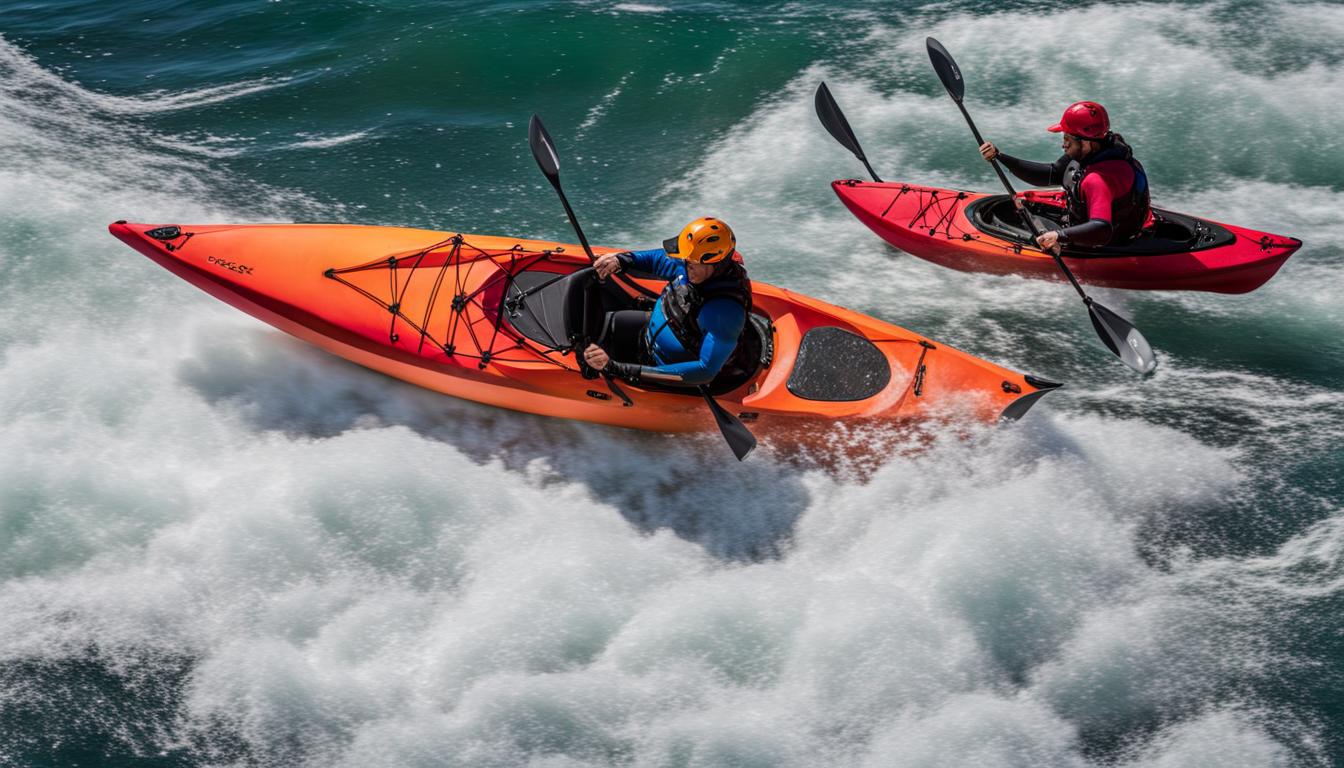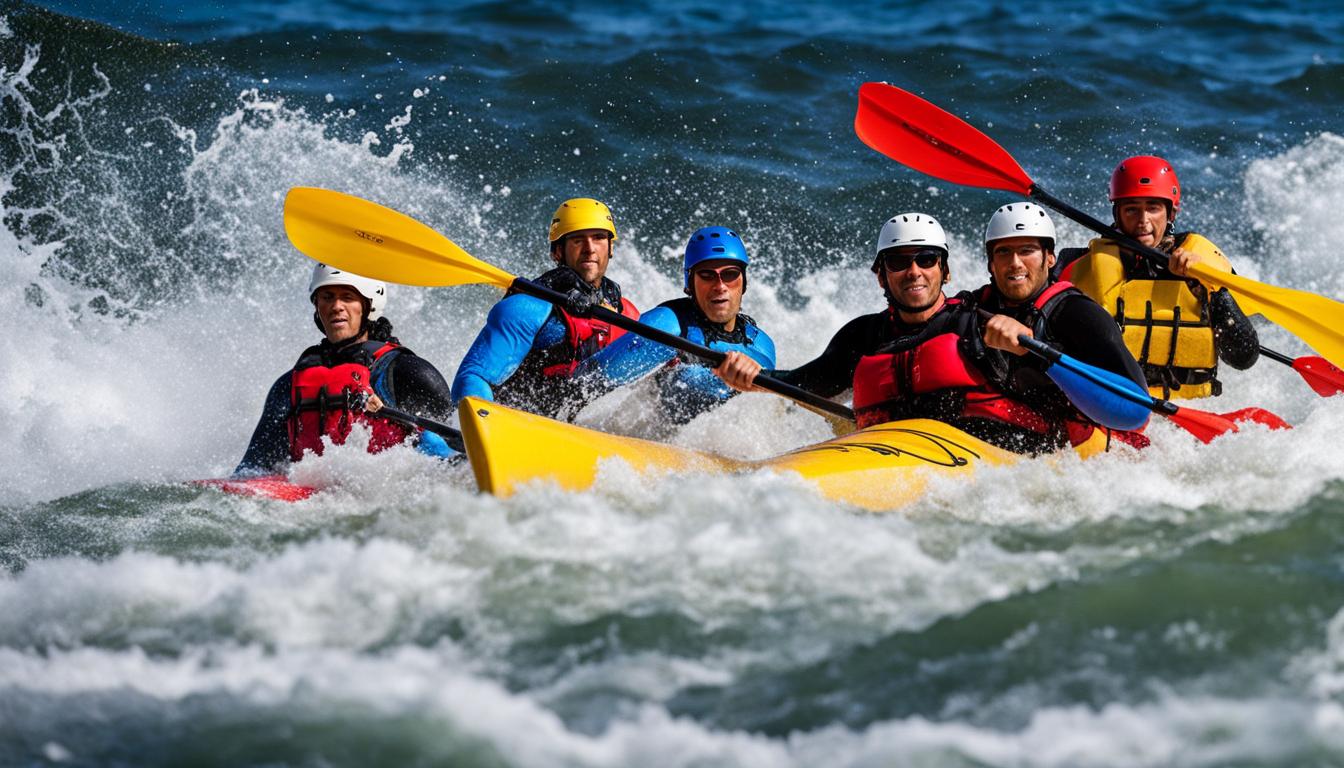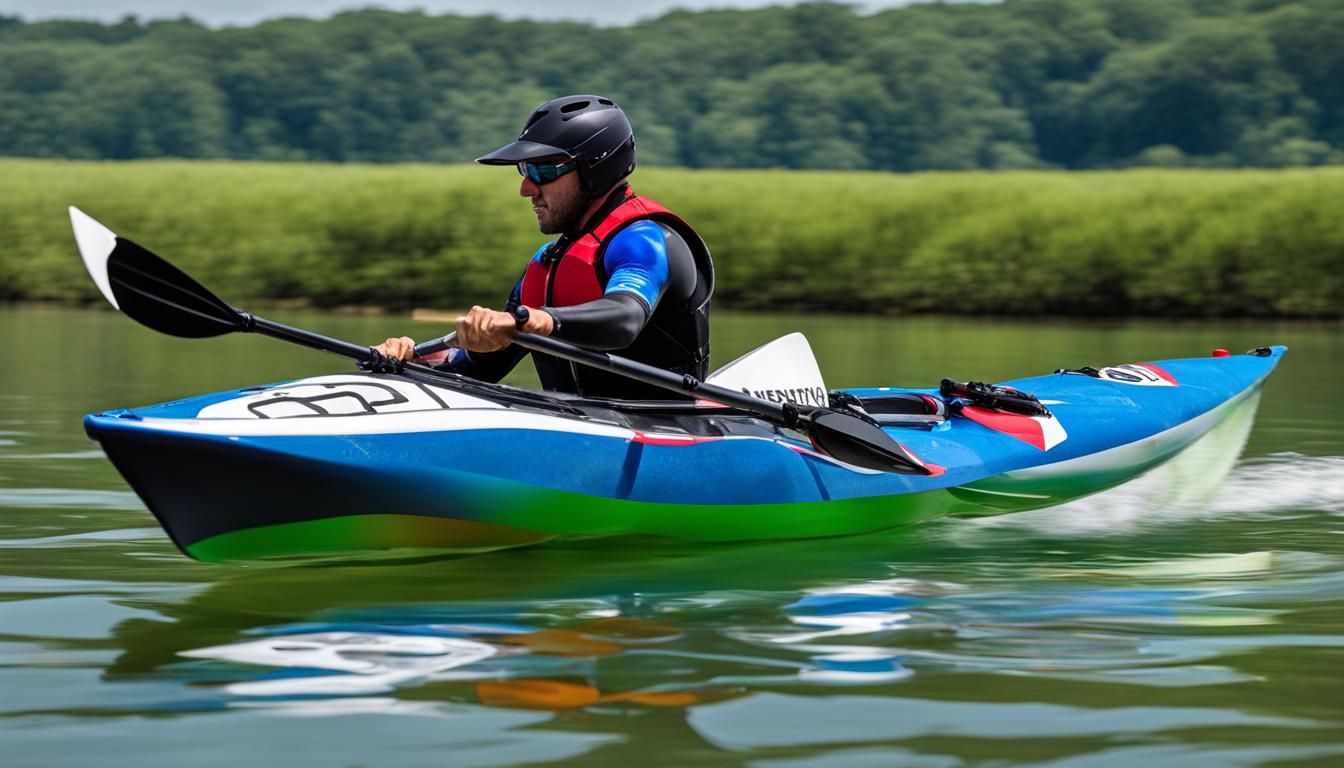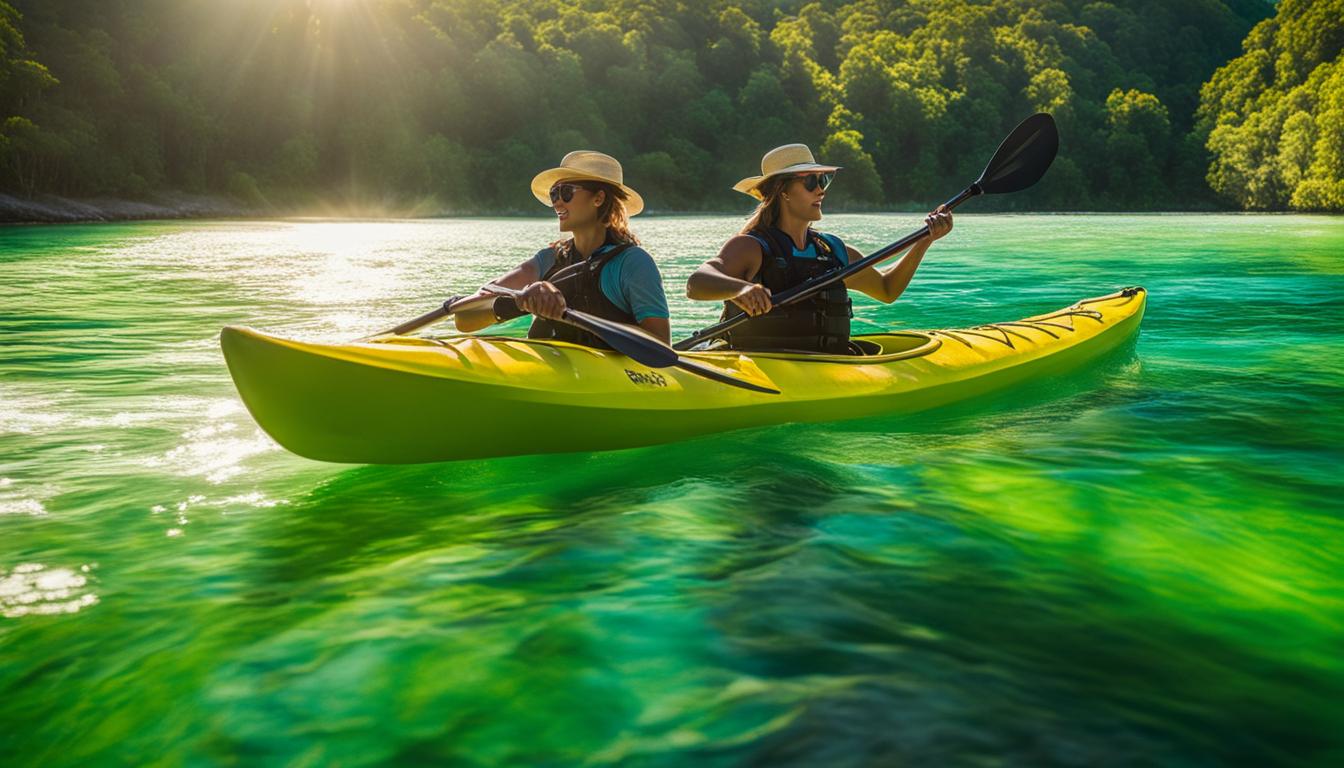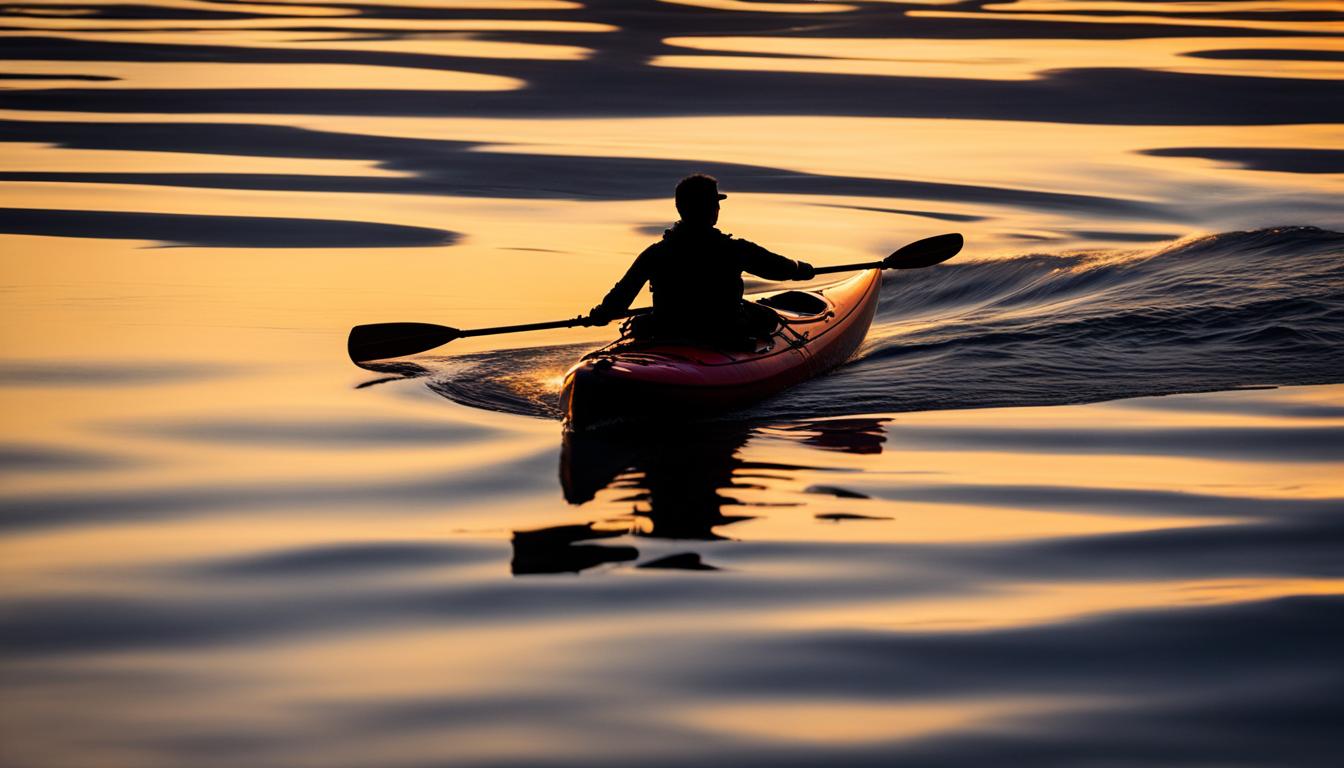When it comes to kayaking, there are two main types that dominate the waters: sea kayaks and whitewater kayaks. While they may seem similar at first glance, these kayaks have significant differences in their design, performance, stability, weight capacity, and portability. Understanding these differences is crucial for making informed choices and ensuring an enjoyable kayaking experience.
Sea kayaks are specifically designed for open waters and multi-day trips. They feature long and narrow hulls with bulkheads, allowing them to handle the challenges of ocean paddling. On the other hand, whitewater kayaks are shorter and wider, prioritizing stability and maneuverability in turbulent river conditions.
Whether you’re planning a serene sea adventure or an adrenaline-fueled whitewater expedition, it’s important to know the contrasting characteristics of sea and whitewater kayaks. Join us as we dive into the details and compare the features that make these kayaks unique.
Key Takeaways:
- Sea kayaks are designed for open waters and multi-day trips, while whitewater kayaks excel in navigating rapids.
- Sea kayaks have longer and narrower hulls, prioritizing speed and long-distance efficiency, while whitewater kayaks are shorter and wider for increased stability.
- Understanding the differences in design, performance, stability, and weight capacity is essential for making an informed kayak choice.
- Consider your intended use, whether it’s sea kayaking or whitewater adventures, and evaluate the pros and cons of each kayak type.
- Both sea and whitewater kayaks offer unique experiences, so choose the one that suits your preferences and the environment you’ll be exploring.
Understanding Sea Kayaks
Sea kayaks are specifically designed for open waters, multi-day paddling trips, and challenging environments. With their long and narrow hulls, sea kayaks offer unmatched performance and efficiency in saltwater environments. These touring kayaks are optimized for speed and covering long distances efficiently.
The design of sea kayaks has its roots in the boats built and used by Inuit tribes thousands of years ago. They have since evolved with the introduction of fiberglass in the 1950s, allowing for lighter and more durable construction. Sea-worthy touring kayaks prioritize stability and maneuverability, ensuring that paddlers can navigate through various conditions that come with open water.
“Sea kayaks are like sleek and swift ocean vessels, built to cut through waves and maintain a steady course. They are made for long-distance paddling, whether it’s exploring coastal areas or embarking on multi-day expeditions.”
Sea kayaks excel in providing a comfortable and stable platform for paddling, allowing kayakers to cover miles efficiently. They often come equipped with features like bulkheads, hatches, and deck lines to enhance safety and storage capacity. These features make sea kayaks capable of carrying gear for extended trips, making them ideal for adventurous paddlers who want to explore coastal regions and experience the thrill of long-distance kayaking.
| Features | Description |
|---|---|
| Long and Narrow Hull | Provides speed and efficiency in open waters |
| Bulkheads | Separate compartments for added safety and storage |
| Deck Lines | For easy rescues and securing gear |
| Hatches | Accessible storage compartments for extended trips |
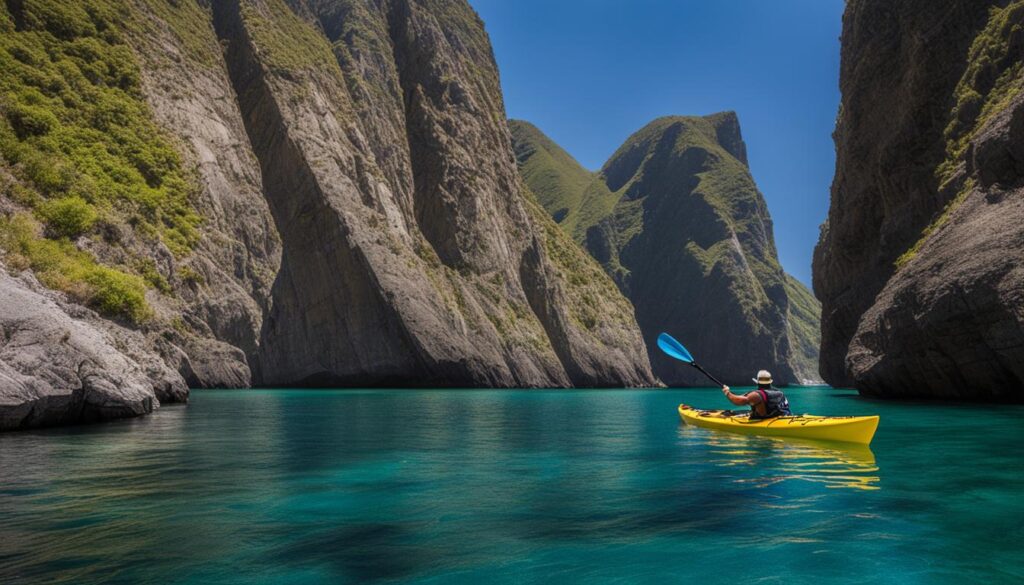
Exploring Sea Kayak Design
When it comes to sea kayak design, the focus is on creating a vessel that can withstand the demands of open water. The long and narrow hull provides speed and efficiency, allowing paddlers to cover long distances with ease. The sleek design cuts through waves, maintaining a steady course even in challenging conditions.
Bulkheads are a crucial feature of sea kayaks as they create separate compartments that enhance safety and storage capacity. In the event of a capsize, bulkheads prevent the entire kayak from flooding, ensuring that the paddler remains afloat. They also provide convenient storage for gear, keeping it secure and dry during long trips.
Deck lines and hatches are additional features that further enhance the functionality of sea kayaks. Deck lines allow for easy rescues, providing a secure grip for both self-rescue and assisting others in need. Hatches offer accessible storage compartments, enabling paddlers to carry all the necessary gear for multi-day trips.
Exploring Whitewater Kayaks
When it comes to kayaking in whitewater rapids and freshwater environments, having the right kayak is essential. Whitewater kayaks are specifically designed to provide stability and maneuverability in fast-moving water and challenging conditions. These recreational kayaks are built to handle the unique demands of whitewater paddling, ensuring an exciting and safe experience.
One of the key features of whitewater kayaks is their stability. Their shorter and wider design offers a low center of gravity, allowing for better balance and control. This stability is crucial when navigating through turbulent rapids, where quick and precise maneuvers are necessary. Whitewater kayaks are also equipped with reinforced hulls and impact-resistant materials to withstand the rigors of whitewater conditions.
Maneuverability is another important factor that sets whitewater kayaks apart. Their design allows for agile movements, making it easier to navigate around rocks, waves, and other obstacles commonly found in whitewater environments. Whether you’re paddling down Class I or Class V rapids, a whitewater kayak provides the responsiveness needed to swiftly change directions and avoid hazards.
Whitewater Kayak Types
Whitewater kayaks come in various types, each suited for different levels of whitewater paddling. Recreational kayaks are ideal for beginners and casual paddlers who want to explore calmer sections of whitewater rivers. These kayaks prioritize stability and are easier to handle, making them a great choice for those new to the sport.
For more experienced paddlers, river running kayaks are designed for intermediate to advanced whitewater conditions. These kayaks offer a balance between stability and maneuverability, allowing paddlers to tackle more challenging rapids with confidence. With their versatile design, river running kayaks are suitable for both playboating and river exploration.
Freestyle kayaks, also known as playboats, are designed for advanced paddlers who want to perform tricks and maneuvers in whitewater features. These kayaks are shorter and have more volume, enabling paddlers to spin, surf, and perform aerial moves on waves and holes. Freestyle kayaks require advanced paddling skills and are not recommended for beginners.
Overall, whether you’re a beginner or an expert, there is a whitewater kayak available to suit your skill level and paddling preferences. Invest in a high-quality whitewater kayak that meets your needs and embark on thrilling whitewater adventures that will create lasting memories.
| Whitewater Kayak Types | Main Features |
|---|---|
| Recreational Kayaks | Stability, ease of handling, suitable for beginners |
| River Running Kayaks | Balance between stability and maneuverability, versatility |
| Freestyle Kayaks | Shorter, more volume, designed for advanced paddlers, tricks and maneuvers |
Contrasting Sea and Whitewater Kayaks
When comparing sea kayaks and whitewater kayaks, there are several key differences that distinguish these two types of kayaks. Understanding these differences is essential in choosing the right kayak for your preferred activity and environment. Let’s take a closer look at the design, performance, stability, and weight capacity of sea and whitewater kayaks.
Design Differences
Sea kayaks are designed for open waters and long-distance paddling. They feature longer and narrower hulls, which allow for increased speed and efficiency. On the other hand, whitewater kayaks have shorter and wider hulls, providing greater stability and maneuverability in fast-flowing rivers and rapids.
Performance and Stability
The performance of sea kayaks is optimized for covering long distances efficiently. Their sleek design allows them to glide through the water effortlessly, making them ideal for touring and multi-day trips. Whitewater kayaks, on the other hand, prioritize stability and maneuverability, allowing paddlers to navigate through rough and turbulent waters with ease.
Weight Capacity
In terms of weight capacity, sea kayaks generally have a higher load-carrying capacity compared to whitewater kayaks. This is because sea kayakers often embark on longer trips and require more storage space for gear and supplies. Whitewater kayaks, on the other hand, are designed for shorter, more intense trips and therefore have a smaller weight capacity.
Table: Contrasting Sea and Whitewater Kayaks
| Sea Kayaks | Whitewater Kayaks | |
|---|---|---|
| Design | Longer and narrower hulls | Shorter and wider hulls |
| Performance | Optimized for speed and long-distance efficiency | Optimized for stability and maneuverability |
| Stability | Good stability for open water conditions | Excellent stability for navigating rapids |
| Weight Capacity | Higher weight capacity for longer trips | Lower weight capacity for shorter trips |
By contrasting the design, performance, stability, and weight capacity of sea and whitewater kayaks, you can make an informed decision when choosing the right kayak for your specific needs. Whether you’re seeking adventure in open waters or tackling whitewater rapids, understanding these differences will ensure a safe and enjoyable kayaking experience.
Conclusion
After understanding the key differences between sea and whitewater kayaks, you can now make informed decisions when choosing the right kayak for your needs. Both types have their pros and cons, and it is crucial to consider various factors before making a final choice.
If you are looking to paddle in open waters and embark on multi-day trips, a sea kayak might be the best option for you. With their long and narrow hulls, sea kayaks provide speed, efficiency, and ample storage space. They are designed for covering long distances effortlessly, making them ideal for saltwater adventures.
On the other hand, if you are more interested in navigating whitewater rapids and exploring freshwater environments, a whitewater kayak is your go-to choice. With their shorter and wider design, these kayaks prioritize stability and maneuverability, ensuring you can handle fast-moving water and obstacles with ease.
Ultimately, the right kayak for you depends on your intended use and personal preferences. Consider factors such as design, stability, weight capacity, and storage space, and find the perfect balance that suits your needs. By making an informed kayak choice, you can enjoy an exciting and safe kayaking experience that aligns with your preferences.
FAQ
What are the main differences between sea kayaks and whitewater kayaks?
Sea kayaks are characterized by long and narrow hulls, while whitewater kayaks are shorter and wider. Sea kayaks prioritize speed and efficiency, while whitewater kayaks prioritize stability and maneuverability.
What are sea kayaks best suited for?
Sea kayaks are designed for open waters, multi-day trips, and challenging environments. They excel in saltwater environments and offer unmatched performance and efficiency.
What are whitewater kayaks designed for?
Whitewater kayaks are specifically designed for navigating rapids in freshwater environments. They provide great stability and maneuverability to handle fast-moving water and obstacles.
How do sea and whitewater kayaks differ in terms of weight capacity?
Sea kayaks generally have higher weight capacity compared to whitewater kayaks. This is because sea kayaks are designed for longer trips and may require additional gear and supplies.
Which type of kayak is better for multi-day trips?
Sea kayaks are better suited for multi-day trips due to their long and narrow design, which allows for efficient long-distance paddling and ample storage space.
Can whitewater kayaks be used in open waters?
While whitewater kayaks can technically be used in open waters, they are not designed for it and may not perform as well as sea kayaks in those conditions. It is generally recommended to use sea kayaks for open water adventures.

